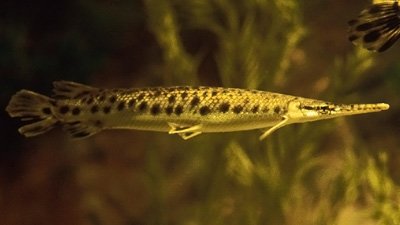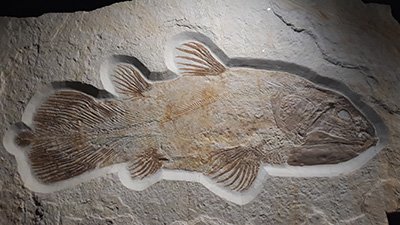
Sorry, But You Are Extinct: the Coelacanth's Story
BBC NEWS: “Fisherman catches ‘living fossil’”
Just imagine it: you’re a fisherman in Indonesia just looking to catch some dinner and maybe a little extra to sell in the local market. You cast your net over the side of your boat and wait patiently. Next thing you know, you’re hauling a 350-million-year-old coelacanth aboard.
In fact, that’s a very mildly fictionalized version of a true story, the biggest whopper being that the coelacanth itself wasn’t 350 million years old; that’s merely the date old-age paleontologists name as its origin in the fossil record. The above story (minus the fiction) ran in May, which prompted us to explain in the May 26 News to Note:
For those not familiar, the coelacanth was once only known from the fossil record. Paleontologists confidently pronounced that it went extinct some 65 million years ago, since no trace of it was found in more “recent” fossil layers. Imagine their surprise when, in 1938, a living coelacanth was found off the coast of Madagascar! This National Geographic News article notes that “[s]everal other coelacanths have been caught in recent decades.”
"Just because we don’t find fossils of certain creatures (or plants) together with humans in the fossil record, it doesn’t mean they didn’t live together."
We then quoted Ken Ham, AiG-U.S. president, who neatly summarized the larger paleontological errors the coelacanth represents (in Missing? or misinterpreted?).
Now here’s the point. No fossils of coelacanths have ever been found in the same layers as human fossils, but they have been found in the same layers as dinosaur fossils—yet we know coelacanths and humans do live together, because they do so in the present world.
In other words, just because we don’t find fossils of certain creatures (or plants) together with humans in the fossil record, it doesn’t mean they didn’t live together.
The story is in the news again this week because the specimen is now being analyzed by scientists to determine its relationship to a coelacanth found off Indonesia in 1998. Of course, no one has told this allegedly 350-million-year-old fish that it was supposed to have been extinct for 65 or 70 million years, which is why it keeps turning up—and conveniently reminding us of the fallibility of the supposed indisputable science evolutionary paleontologists feed the public. And if it’s not enough of a reminder, the BBC article offers another example, courtesy of coelacanth expert Peter Forey of London’s Natural History Museum:
“Estimates from the genetic fingerprinting carried out on the fish caught in 1998 suggest that they separated about four to five million years ago, however if you look at the geology of the oceans, it suggests that they should have separated about 30 million years ago.”
So in the first case, we had scientists spouting dates that were disproved by reality; in the second case, we have scientists whose numbers—from separate fields of origins science—fail to line up.
Then the BBC article adds this zinger:
On Wednesday, another group of scientists announced that they had discovered a 400-million-year-old fossil of a coelacanth fin.
Really?
Remember, if you see a news story that might merit some attention, let us know about it! (Note: if the story originates from the Associated Press, Fox News, MSNBC, the New York Times, or another major national media outlet, we will most likely have already heard about it.) And thanks to all of our readers who have submitted great news tips to us.
(Please note that links will take you directly to the source. Answers in Genesis is not responsible for content on the websites to which we refer. For more information, please see our Privacy Policy.)
Recommended Resources

Answers in Genesis is an apologetics ministry, dedicated to helping Christians defend their faith and proclaim the good news of Jesus Christ.
- Customer Service 800.778.3390
- Available Monday–Friday | 9 AM–5 PM ET
- © 2025 Answers in Genesis





